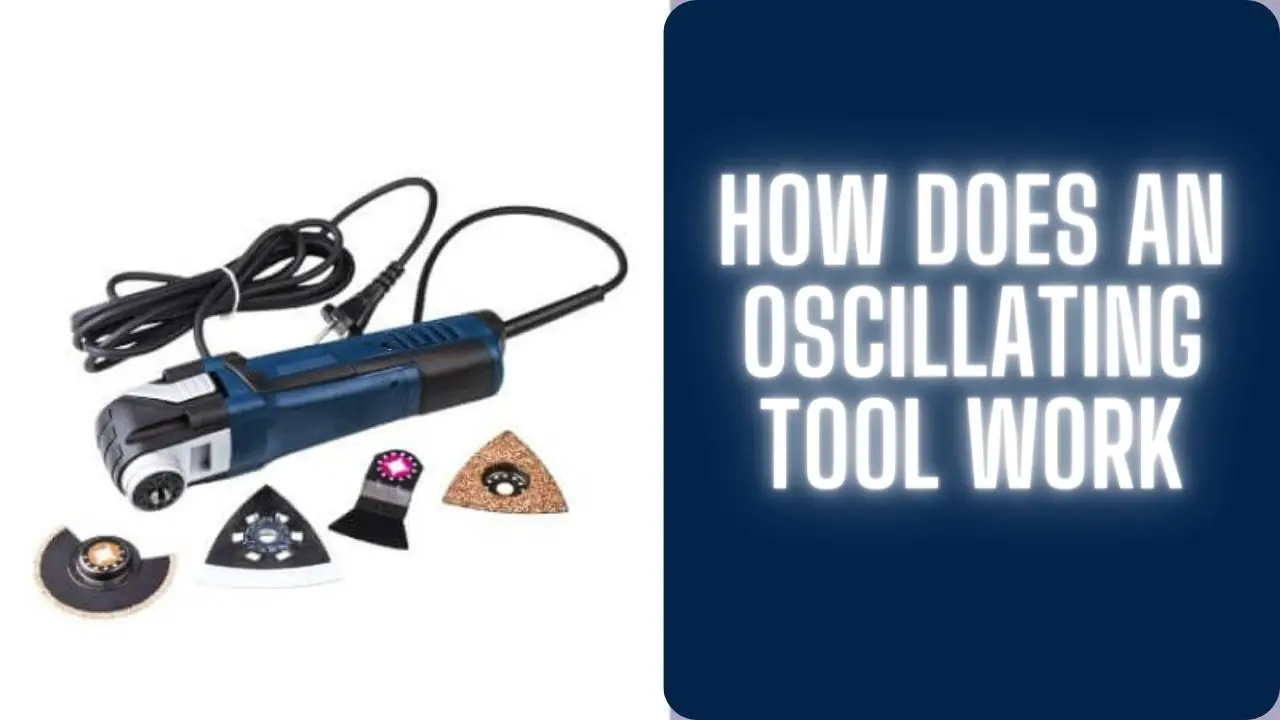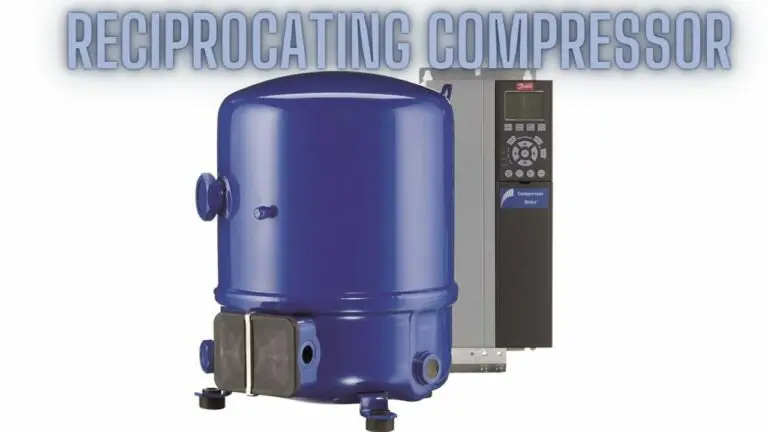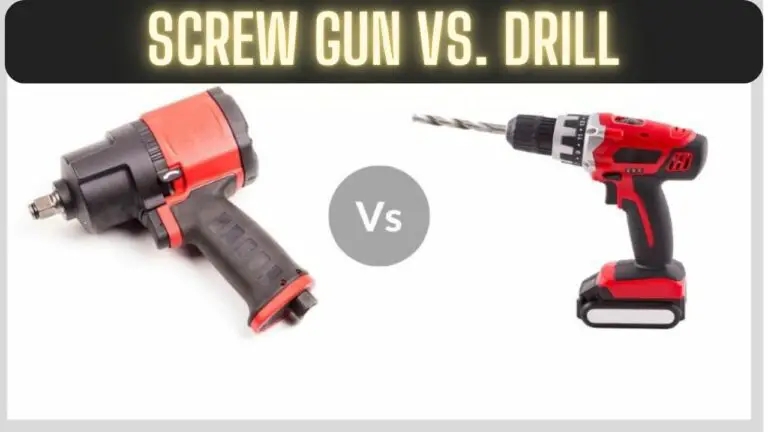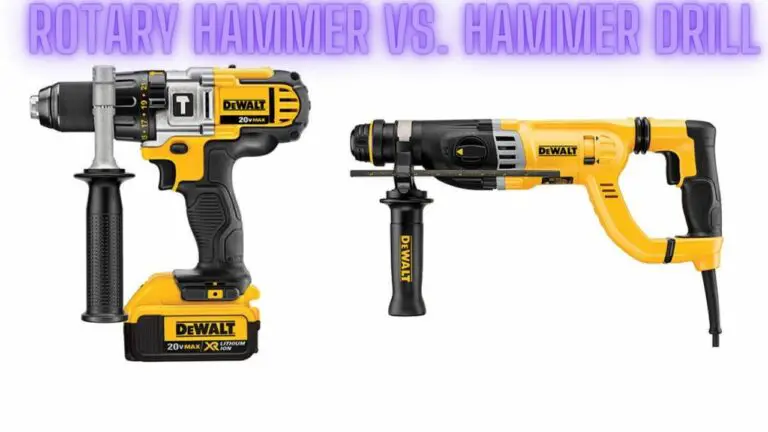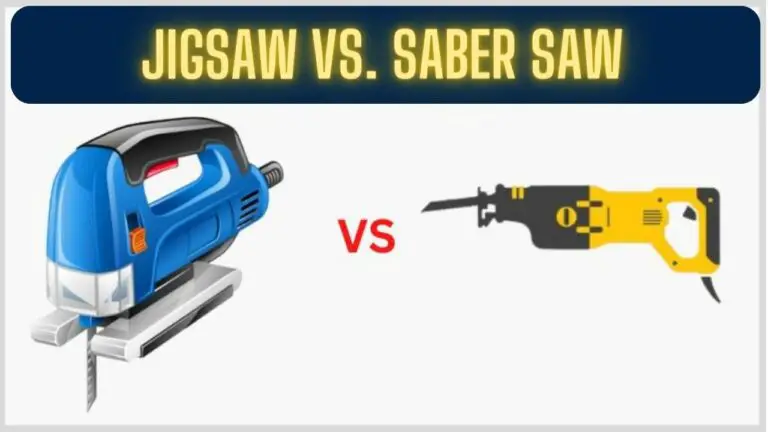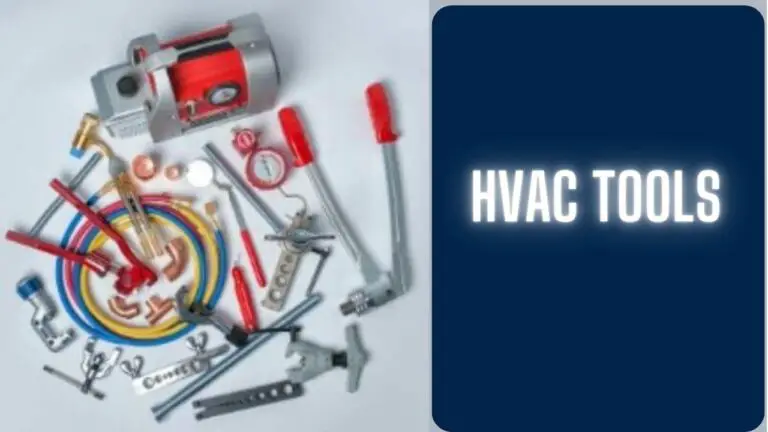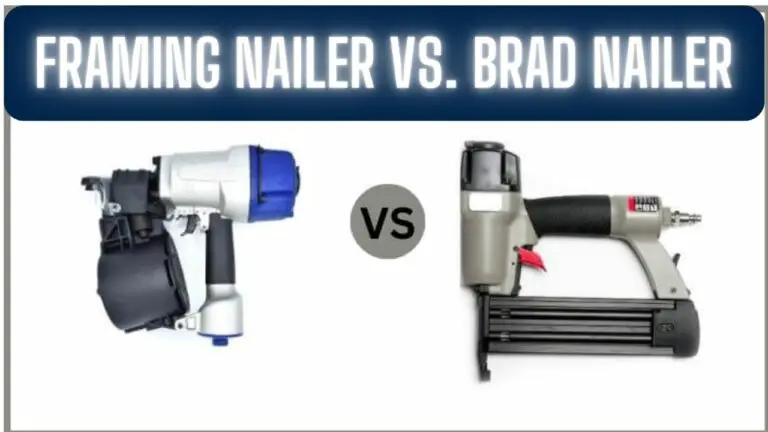How Does an Oscillating Tool Work?
Introduction
Oscillating tools, often referred to as oscillating multi-tools or oscillating cutters, have become a staple in the toolkit of many DIY enthusiasts and professionals. These versatile tools are used for a wide range of tasks, from cutting and sanding to scraping and grinding. But how do oscillating tools work? In this article, we’ll delve into the mechanics and functionality of oscillating tools to better understand their operation.
The Basic Principle
At its core, an oscillating tool operates based on a straightforward principle: it moves a blade or attachment back and forth at a high frequency. This oscillating motion allows the tool to perform a variety of tasks with precision and control.
Components of an Oscillating Tool
- Motor: The heart of the oscillating tool is its electric motor. This motor is responsible for generating the power needed to drive the oscillation. Oscillating tools are available in both corded and cordless variations, with corded models typically offering more consistent power.
- Gear Mechanism: Connected to the motor is a gear mechanism that converts the rotational motion of the motor into the back-and-forth oscillating motion. This gear assembly ensures that the tool’s blade or attachment moves rapidly in a controlled manner.
- Oscillating Mechanism: The oscillating mechanism includes a crankshaft that converts the rotary motion from the gears into a linear motion. As the crankshaft moves back and forth, it drives the attachment or blade with it.
- Attachment System: Oscillating tools feature a quick-change attachment system that allows users to switch between various accessories easily. These attachments can include cutting blades, sanding pads, grout removal blades, and more.
- Variable Speed Control: Many oscillating tools come equipped with variable speed control, enabling users to adjust the oscillation speed to suit different materials and applications. Slower speeds are often used for delicate tasks like sanding, while higher speeds are ideal for cutting through tough materials.
How It Works
- Power Supply: When you turn on the oscillating tool, the electric motor draws power from either the cord or the rechargeable battery (in the case of cordless models).
- Conversion of Rotational Motion: The motor’s rotational motion is converted into the oscillating motion through a combination of gears and a crankshaft. This process involves intricate mechanical engineering to achieve precise, high-frequency oscillations.
- Attachment Movement: The oscillating motion generated by the crankshaft is transmitted to the attachment, causing it to move rapidly back and forth. This movement can range from 10,000 to 21,000 oscillations per minute (OPM) or even higher, depending on the model.
- Cutting, Sanding, or Scraping: Depending on the attached accessory, the oscillating tool can perform various tasks. For instance, a cutting blade can slice through wood, plastic, or metal, while a sanding pad can smooth surfaces. The user guides the tool to achieve the desired result with accuracy.
What Accessories Can I Use with an Oscillating Tool?
Oscillating tools are incredibly versatile and can be used for a wide range of tasks, thanks in part to their compatibility with various accessories and attachments. Here is a list of common accessories that you can use with an oscillating tool:
- Cutting Blades:
- Wood Cutting Blades: Designed for cutting wood and wood-based materials, these blades have teeth suitable for fast and clean cuts.
- Metal Cutting Blades: These blades have tougher teeth for cutting through metals like copper, aluminum, and nails.
- Bi-metal Blades: Ideal for cutting through both wood and metal due to their versatile tooth design.
- Sanding Pads and Sandpaper:
- Oscillating tools can be fitted with sanding pads and sandpaper for sanding tasks. They are excellent for sanding in tight spaces and corners.
- Grout Removal Blades:
- Used for removing grout from tile joints. They come in various shapes and sizes to accommodate different grout line widths.
- Scraping Blades:
- These attachments are great for removing old adhesive, paint, caulk, or other stubborn materials from surfaces.
- Flush-Cut Blades:
- Designed for making precise flush cuts, such as trimming protruding nails, screws, or pipe flush to the surface.
- Rasping and Grinding Accessories:
- Rasping attachments are used for grinding or rasping wood, plastic, or other materials. They can be helpful for shaping and smoothing surfaces.
- Carbide Grout Blades:
- Similar to grout removal blades, these attachments have carbide tips for more efficient grout removal.
- Diamond-Coated Blades:
- Used for cutting or grinding through hard materials like tile, stone, or concrete. They are suitable for shaping and smoothing tile edges as well.
- Flush-Cut Blades with Depth Stops:
- These blades have depth control to make controlled cuts at a specific depth, which can be useful for avoiding damage to underlying materials.
- Segmented Blades:
- Segmented blades have gaps between the segments, allowing them to be more flexible for cutting softer materials like plastics and drywall.
- Polishing Accessories:
- You can attach polishing pads and compounds to your oscillating tool for tasks like buffing and polishing.
- Adapter and Extension Accessories:
- Adapters and extensions can be used to increase the reach and versatility of your oscillating tool. They allow you to use accessories in hard-to-reach areas.
- Dust Extraction Attachments:
- These accessories help reduce dust and debris generated during sanding or cutting tasks, improving visibility and air quality.
- Grout and Caulk Removal Accessories:
- Specialized accessories designed for removing old grout and caulk in preparation for regrouting or recaulking.
- Flush-Cut Saw Blades:
- These blades are used for making precise, flush cuts in wood and other materials, allowing you to cut close to a surface without damaging it.
- Wood and Metal Rasping Accessories:
- Rasping attachments designed for wood or metal work can help shape and smooth surfaces efficiently.
It’s essential to select the right accessory for your specific task, as the type of blade or attachment you choose can significantly impact the results and the performance of your oscillating tool. Always follow safety guidelines and manufacturer recommendations when using accessories with your oscillating tool to ensure safe and efficient operation.
Benefits of Using an Oscillating Tool
Oscillating tools have gained popularity in both professional and DIY settings due to their versatility and a wide range of applications. Here are some of the key benefits of using an oscillating tool:
- Versatility: Oscillating tools are incredibly versatile and can handle various tasks. They can cut, sand, scrape, grind, polish, and more. This versatility makes them a valuable addition to any toolbox.
- Precision: The oscillating motion of the tool allows for precise and controlled cutting or sanding, making it suitable for detailed work and intricate cuts.
- Access to Tight Spaces: The compact size and narrow profile of oscillating tools make them ideal for working in tight or hard-to-reach spaces where other power tools may struggle to fit.
- Minimal Dust and Noise: Compared to some other power tools like angle grinders, oscillating tools produce less dust and generate relatively low noise levels. This makes them more suitable for indoor and confined spaces.
- No Kickback: Oscillating tools do not have the same kickback as some other cutting tools, enhancing safety during operation.
- Ease of Blade Changes: Most oscillating tools have a quick-change blade system, making it easy to switch between different accessories and continue working without lengthy interruptions.
- Reduced Vibrations: Oscillating tools produce less vibration compared to many other power tools, reducing user fatigue during extended use.
- Precise Grout and Caulk Removal: Oscillating tools equipped with grout removal blades are excellent for removing old grout and caulk without damaging adjacent tiles or surfaces.
- Efficient Material Removal: When fitted with sanding attachments, oscillating tools are efficient at removing paint, varnish, adhesive, and rust from a variety of surfaces.
- Plunge Cutting: Oscillating tools excel at plunge cutting into materials, allowing you to create holes or openings without the need for pilot holes.
- Scraping and Adhesive Removal: The scraping attachments are effective at removing old adhesive, glue, and tape residue from surfaces.
- Versatile Blade Selection: There is a wide range of accessory blades and attachments available, allowing users to tackle different materials and applications with ease.
- Minimal Surface Damage: The oscillating motion reduces the likelihood of surface damage or splintering when cutting, making it ideal for delicate materials like drywall and trim.
- Ease of Control: The handheld design and precise control offered by oscillating tools make them user-friendly, even for individuals with limited experience.
- Cost-Effective: Oscillating tools offer great value for their versatility, reducing the need to invest in multiple specialized tools for various tasks.
- DIY-Friendly: Oscillating tools are well-suited for DIY projects, and their ease of use makes them accessible to users of all skill levels.
In conclusion, the benefits of using an oscillating tool, such as versatility, precision, and ease of use, make it a valuable tool for a wide range of tasks. Whether you are a professional tradesperson or a DIY enthusiast, an oscillating tool can help you save time and achieve high-quality results in various applications.
How to Choose the Right Oscillating Tool
Choosing the right oscillating tool for your needs involves considering several factors to ensure that you get the tool that best matches your specific requirements. Here are some steps to help you select the right oscillating tool:
- Identify Your Intended Uses:
- Determine the primary tasks you plan to perform with the oscillating tool. Are you mostly cutting, sanding, scraping, or doing a combination of tasks? Understanding your specific applications will help you select the right accessories and features.
- Consider Power Source:
- Decide whether you prefer a corded or cordless oscillating tool. Corded models typically offer consistent power but require an electrical outlet. Cordless models offer portability but may have limited run time, so consider your need for mobility.
- Check Oscillation Speed:
- Look for an oscillating tool with variable speed settings. Different materials and applications may require varying oscillation speeds. Having adjustable speed control allows you to match the tool’s performance to the task at hand.
- Accessory Compatibility:
- Ensure that the oscillating tool you choose is compatible with a wide range of accessories. Check for a tool with a quick-change accessory system for easy blade swaps and compatibility with third-party attachments.
- Amperage Rating (for Corded Models):
- For corded oscillating tools, consider the amperage rating. Higher amperage models generally provide more power and can handle more demanding tasks. However, for lighter applications, lower amperage tools may suffice.
- Ergonomics and Comfort:
- Evaluate the ergonomics of the tool, including the grip design and overall comfort during extended use. A comfortable grip and balanced weight distribution can reduce user fatigue.
- Build Quality and Durability:
- Look for a well-built and durable oscillating tool that can withstand regular use and potentially rough handling. Read reviews and check for the reputation of the brand or manufacturer.
- Dust Extraction Compatibility:
- If you plan to use the tool for sanding or cutting tasks that generate dust, consider a model that is compatible with dust extraction attachments. This can help keep your workspace cleaner and improve visibility.
- Noise and Vibration Levels:
- Consider the noise and vibration levels of the tool. Lower noise and vibration can enhance comfort during use and reduce the potential for user fatigue.
- Brand and Warranty:
- Choose a reputable brand with a good track record for quality and customer support. Check the warranty offered with the tool to ensure you have protection in case of defects or issues.
- Price and Budget:
- Set a budget for your oscillating tool purchase and look for models that offer the features you need within your price range. Keep in mind that higher-priced tools may offer more power and durability.
- Read Reviews and Seek Recommendations:
- Before making a final decision, read reviews from other users and seek recommendations from professionals or DIY enthusiasts who have experience with oscillating tools. Their insights can provide valuable information.
- Test the Tool (if possible):
- If possible, try out the tool in a store or borrow one from a friend to see how it feels in your hand and how well it performs for your intended tasks.
By carefully considering these factors and conducting thorough research, you can choose the right oscillating tool that suits your needs and helps you tackle a wide range of projects effectively and efficiently.
Oscillating Tool FAQS
What is an oscillating tool?
An oscillating tool is a handheld power tool that uses a rapid back-and-forth oscillating motion to perform various tasks such as cutting, sanding, scraping, grinding, and more. It is known for its versatility and precision.
What are the primary uses of an oscillating tool?
Oscillating tools are used for a wide range of tasks, including cutting through various materials, sanding surfaces, scraping paint or adhesives, removing grout, making plunge cuts, and more. They excel in applications where precision and control are essential.
What types of accessories can I use with an oscillating tool?
Oscillating tools are compatible with a variety of accessories, including cutting blades (for wood, metal, and more), sanding pads and sandpaper, grout removal blades, scraping attachments, grinding accessories, polishing pads, and more. The choice of accessory depends on the task at hand.
Can I use third-party accessories with my oscillating tool?
Many oscillating tools are designed to be compatible with a wide range of accessories, including those from third-party manufacturers. However, it’s essential to check the compatibility of accessories with your specific tool model to ensure a proper fit and safe operation.
What is the difference between corded and cordless oscillating tools?
Corded oscillating tools are powered by an electrical cord and typically provide continuous power but have limited mobility. Cordless oscillating tools run on rechargeable batteries, offering greater portability but with a finite runtime before needing recharging.
How do I change accessories on an oscillating tool?
Most oscillating tools have a quick-change accessory system. To change accessories, you typically need to release a lever, clamp, or tool-less mechanism that secures the accessory in place. Once released, you can remove and replace the accessory quickly.
Are oscillating tools safe to use?
When used correctly and with appropriate safety precautions, oscillating tools are generally safe. However, as with any power tool, there are inherent risks. Always follow safety guidelines, wear appropriate personal protective equipment (PPE), and read the tool’s user manual for specific safety instructions.
Can I use an oscillating tool for plumbing or electrical work?
Oscillating tools are commonly used for tasks like cutting holes in drywall for electrical boxes or plumbing pipes. However, when working near electrical wiring or water pipes, it’s crucial to take precautions and ensure safety by turning off power sources or water supplies.
Can I use an oscillating tool for heavy-duty tasks?
While oscillating tools are versatile, they may not be suitable for extremely heavy-duty tasks, such as cutting thick steel or concrete. The tool’s power and blade selection can impact its performance on tougher materials.
What should I consider when buying an oscillating tool?
Consider factors such as the tool’s intended use, power source (corded or cordless), oscillation speed, compatibility with accessories, ergonomics, durability, and budget. Research brands and models, read reviews, and seek recommendations from experienced users to make an informed choice.
Can oscillating tools be used for fine woodworking?
Yes, oscillating tools are often used in fine woodworking for tasks like making precise cuts, shaping, sanding, and trimming. Their ability to provide controlled, detailed work makes them valuable in woodworking projects.
Are there safety tips for using oscillating tools?
Yes, some safety tips for using oscillating tools include wearing appropriate PPE (safety glasses, hearing protection, dust mask), ensuring the tool is disconnected or the battery is removed when changing accessories, and maintaining a firm grip while using the tool to maintain control.
Can oscillating tools be used for tile work?
Yes, oscillating tools are commonly used in tile work for tasks such as cutting and shaping tiles, removing grout, and making precision cuts around fixtures. Tile-cutting blades and grout removal accessories are available for these tasks.
Conclusion
Oscillating tools have revolutionized the way many tasks are performed in woodworking, home improvement, and renovation projects. Their unique oscillating motion, generated by an electric motor and intricate mechanical components, provides users with a versatile and precise tool for a wide range of applications. Whether you’re a professional contractor or a DIY enthusiast, understanding how an oscillating tool works can help you make the most of this valuable addition to your toolbox.

